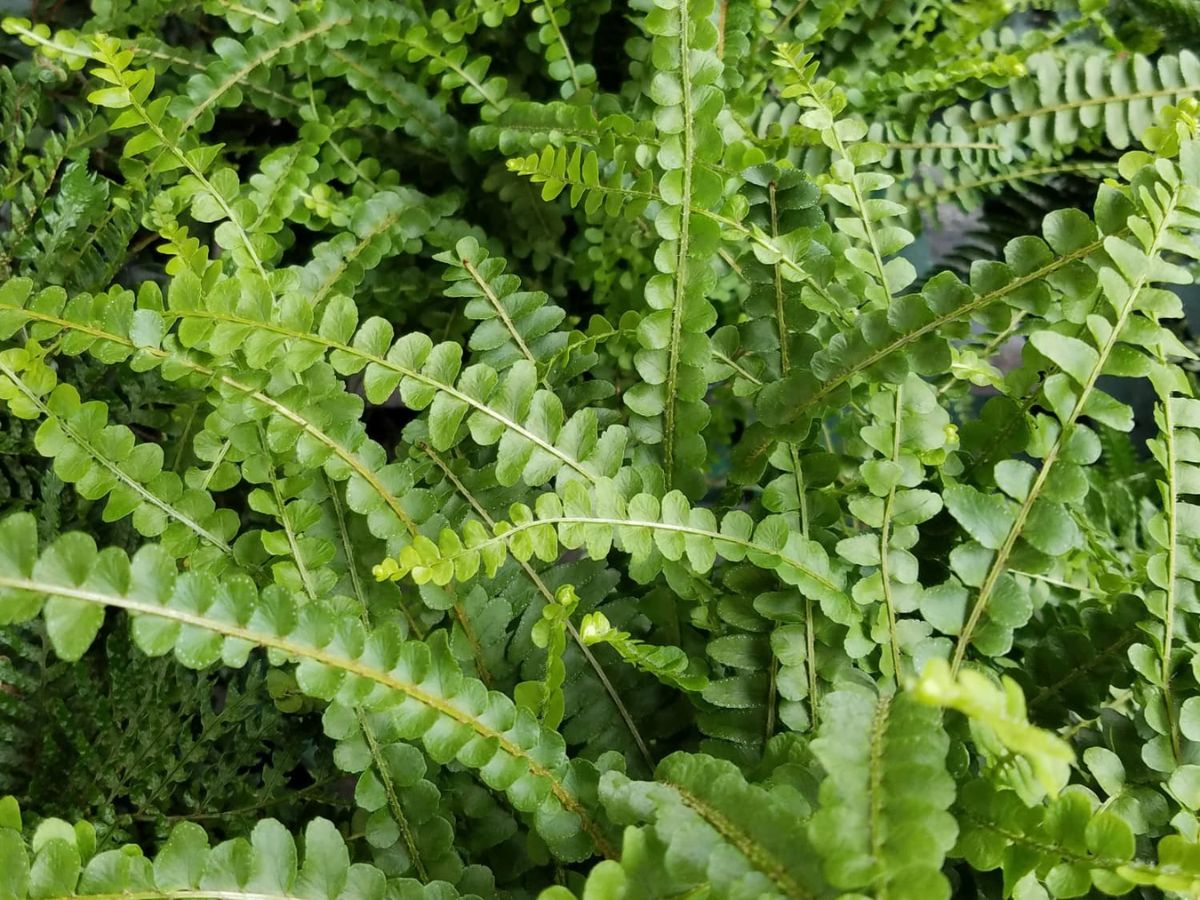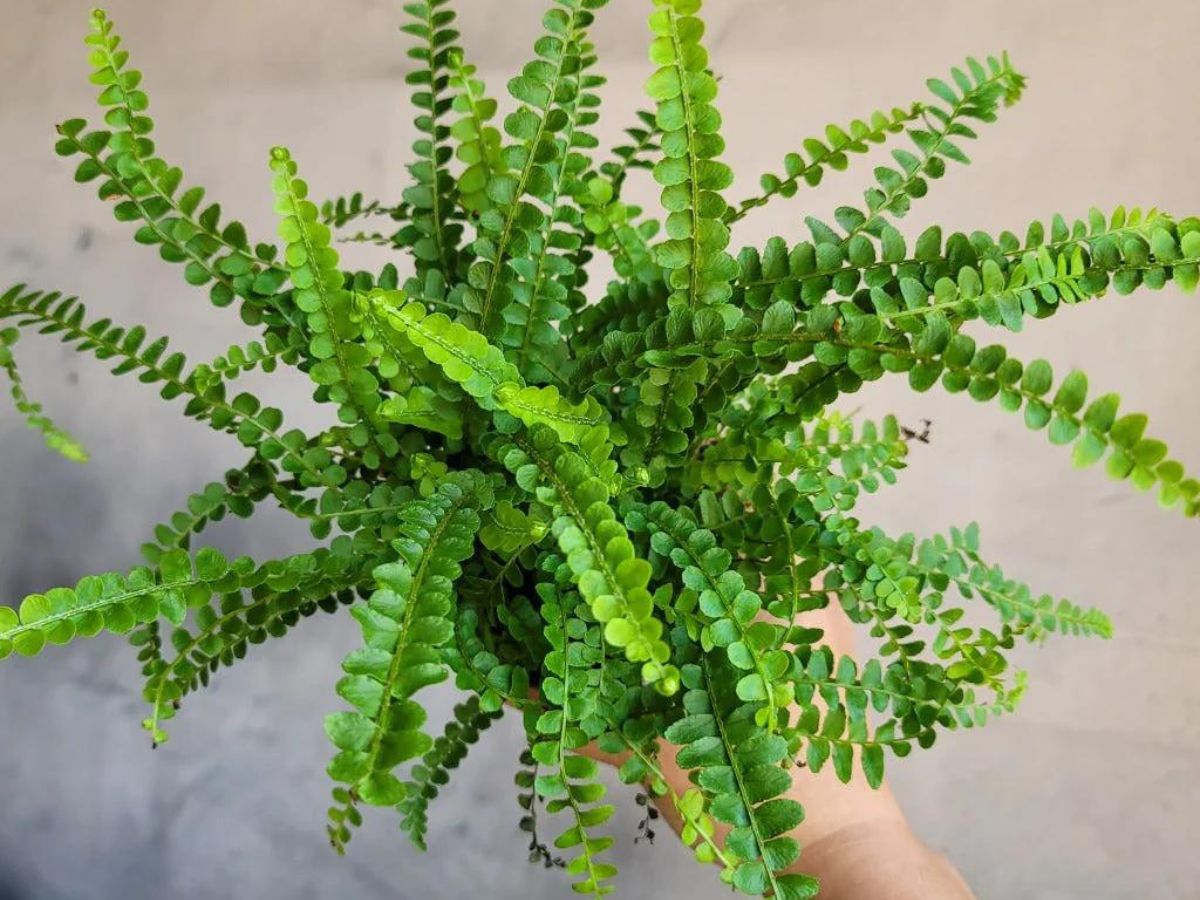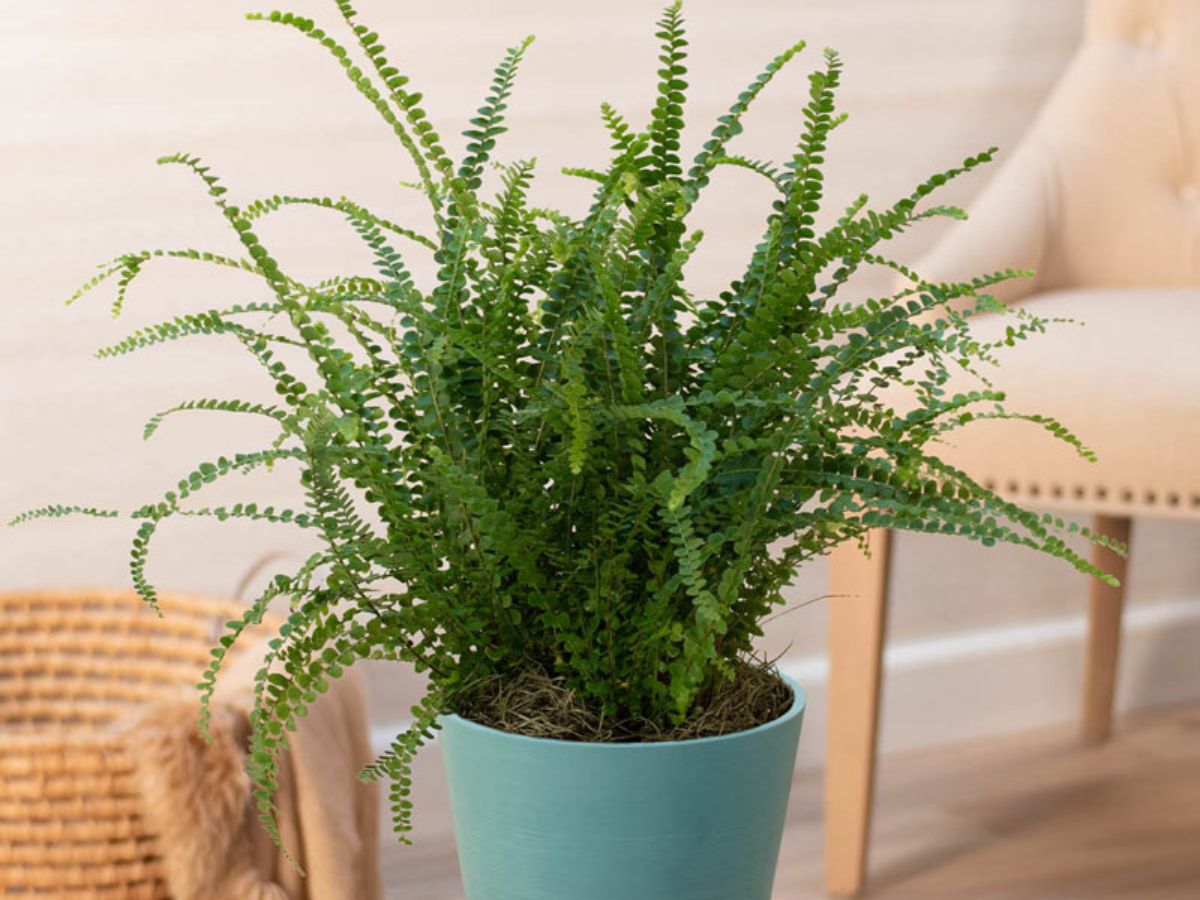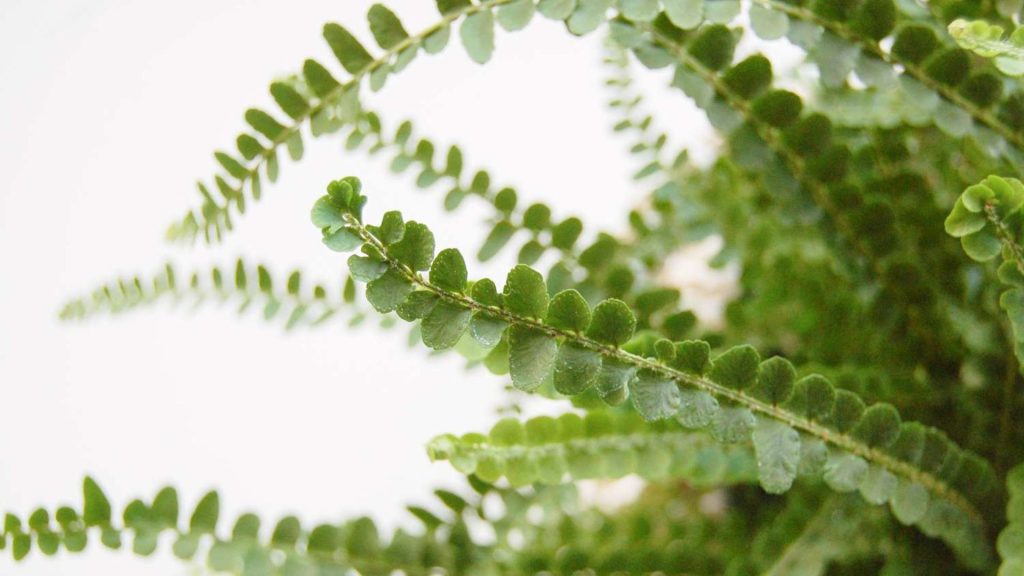Many people are unable to maintain ferns alive, even though there are several fern kinds available. The lemon button fern (Nephrolepis cordifolia “Duffii”) is a lovely plant that could appeal to both novice and experienced collectors. It’s easy to care for and also one of the more economical options. During the busy growth months, it also emits a faint citrus aroma. Furthermore, it is absolutely non-toxic to your pets. Today, we want to take a closer look at the lemon button fern and find out how to care for it.
The lemon fern plant is a kind of Southern sword fern that grows in shaded regions. Lemon button fern is called for its little stature and rounded leaflets, which can grow up to 12 inches. This amazing plant is also often called a fishbone fern due to its unique leaves. Plant hardiness zones 8 -10 of the USDA are ideal for growing it. This adaptive fern can even withstand salty soil and sea air.
Now that we got to know this cute plant better, we offer you to learn how to care for lemon fern.
Care for Lemon Button Fern Indoors

Button Fern Light Requirements
Lemon button ferns develop as understory plants in their natural habitat and are tolerant to low light levels. They thrive in medium, indirect light when grown indoors, but they may also thrive in low or strong light. However, never leave your plant in full sunlight, since the delicate leaves can be burned.
Soil and Container
These plants thrive on ordinary houseplant soil. They would thrive in a loose, peaty soil mix if to be more exact.
The sky’s the limit when it comes to containers. Your lemon button will survive as long as it has enough area to develop. Any pot would do, whether it’s glazed or unglazed, hanging or fixed. These ferns make great compliments to bigger terrariums as well.
It is a plant that doesn’t mind being kept in a container that doesn’t have any drainage. It is alright as long as you don’t overwater it (which encourages root rot). Simply place stones or pebbles in the bottom of a container with no drainage to protect the roots from standing in water. Lemon button ferns are very popular in vivariums and animal terrariums.
Watering
The lemon button fern, like other ferns, should never be allowed to completely dry out. How often to water lemon button fern – one may reasonably ask. Water it at least once a week to keep the soil moist. While these ferns benefit from continuous rainfall, never overwater them as this can cause root rot.
Humidity and Temperature
Maintaining proper moisture level is an integral part of lemon button fern indoor care. Warm, humid environments are ideal for these ferns. For the most part, standard temperature and humidity levels should be sufficient for lemon button ferns, however, if your home is extremely dry, your fern should get some more moisture. Place your lemon button fern near a small humidifier or in a location with a high humidity level, such as the bathroom or kitchen.
Warmer temperatures are preferred for lemon button ferns. Try to keep the temperature from 60 to 70 °F (15 to 20 °C). One may argue, however, that the humidity level is far more crucial to these plants than the temperature.
Fertilizing
This plant develops slowly, so don’t bother measuring it every day to see how far it’s progressed. Fertilize your plant many times a year if you want to give it a boost. Make careful to follow the bottle’s instructions!
Pruning
In the fall and winter, mature leaves on the plant naturally drop back and remove the dead leaves. Sterilize your tools by cleaning the blades with rubbing alcohol before clipping brown, withered leaves. Because the foliage of lemon button fern is dense at the base of the clump, avoid pruning any green or developing leaves. After you’ve completed cutting your fern, sterilize the pruning tools once again.
Propagation
These plants are easy to reproduce by division since they develop from rhizomes. Dividing a healthy fern is a terrific strategy to grow new plants while also controlling the growth of an existing one. Propagation by division is a straightforward procedure that may be done in a few easy steps:
- The entire fern is carefully removed from its container.
- Determine which fern piece you wish to separate from the main clump.
- Gently separate the roots of the new portion of fern from the old plant with your hands, breaking as few roots as possible.
- After the ferns have been divided, place them in separate pots with a well-draining soil mix, and do not forget to water them.
Common Problems When Growing

Brown Crispy Leaves
Leaves that get brown and crispy indicate that your fern isn’t getting enough water or humidity. Make sure to water your plant on a regular basis, and use a humidifier or pebble tray to add extra humidity.
Leaves Are Withering
Wilting leaves might indicate one of two issues: too much sunlight or too much water. If the leaves are drooping and the stems are mushy, the cause is most likely overwatering; otherwise, solar damage is a possibility.
Yellowing of the Leaves
Yellowing leaves can also be caused by too much sunlight or too much water. Make sure your plant isn’t in direct sunlight, and never flood the soil while watering.
Is It Poisonous to Pets?
Dogs and cats are unaffected by this plant. This is what makes it such a lovely plant in general.
How Fast Do They Grow?

Lemon button ferns are known for their sluggish development, so it may take a long before you see any changes. As long as you aren’t losing more leaves than you are acquiring each year, your fern is likely happy and flourishing well. Lemon button fern care may be a very enjoyable and successful experience. It’s difficult to believe it’s considered a starter plant, given its beauty. To be honest, we believe that everyone should try growing this plant at least once in their lives. These ferns aren’t only adorable; they’re also resilient and simple to raise. Lemon button ferns, unlike other fern kinds, can survive a little neglect, making them perfect for the beginning grower. They only require a small amount of light and constant watering to be happy.


